consultant

client

financing/framework


The Conservation Plan for Lukanga Swamp is being developed with the support of the World Bank under Component 2 - Enhancing Institutional Capacity for Environmental Governance and Compliance - of Zambia Mining and Environmental Remediation and Improvement Programme (ZMERIP).
The development of the Conservation Plan comprises an integrated approach that evaluates the upstream-downstream interactions and the impacts on Lukanga Swamp and its catchment, including the ecosystem services and livelihoods of the communities who rely on the swamp for a multitude of reasons. Main steps/components:
“Lukanga Swamps Ramsar Site” (coordinates: 14°24'S 27°37'E) is the core of the wider conservation area included in the Conservation Plan (plan area “A”). The plan areas also include a 10 km conservation buffer of the Ramsar site for increased protection of the key biodiversity and conservation areas (Lukanga Swamp Environmentally Protected Area or plan area “B”).
Complementary areas, to take into account the sources of impacts on Lukanga Swamp and its catchment, include Lukanga Swamp watershed (plan area “C”) and Kafue River Basin upstream (plan area “D”).
Starting with a preliminary data collection (in-desk), this stage was very important to fine-tune, with ZEMA and key stakeholders:
| Year | 2021 | |||
|---|---|---|---|---|
| Month | Apr | May | Jun | Jul |
| Phase 4 – Integration | ||||
| Preparation of D7 | ||||
| (D7) Draft report | ||||
| Phase 5 – Presentation | ||||
| Transfer of collected and produced data | ||||
| Stakeholder consultation workshop (W3) | ||||
| Integration of W3 findings/preparation of D8 | ||||
| (D8) Final report D8 | ||||
| Phase 6 – Capacity building | ||||
| Seminar (S1) | ||||
| Training (T1, T2, T3) | ||||
Presentation of the scope of the assignment; stakeholder engagement for cooperation
Presentation and discussion of the Draft Report
(PDF file | ~10.3 MB)
(PDF file | ~10.3 MB)
(PDF file | ~51.6 MB)
One of the most important stages in any assignment, scoping aimed at establishing the (spatial, temporal, thematic, etc.) focus for subsequent work, through the following tasks (in this particular case):
(PDF file | ~47.5 MB)
(PDF file | ~56.4 MB)
The baseline assessment of Lukanga Swamp and of possible sources of degradation upstream (in Lukanga’s catchment and UKRB), comprised:
(PDF file | ~55.1 MB)
At this phase, previous assessment of the current biophysical and governance status and past trends were used to make a diagnostic of wetland values, establish conservation objectives and anticipate future evolution scenarios and corresponding actions to tackle current and potential conservation issues; this included:
(PDF file | ~78.6 MB)
(PDF file | ~26.1 MB)
This phase will mainly aim at disclosing, discussing and validating the results of the assignment, including:
At this phase, a final dissemination of results will take place, as well as training actions to guarantee a successful implementation of the conservation plan, including: